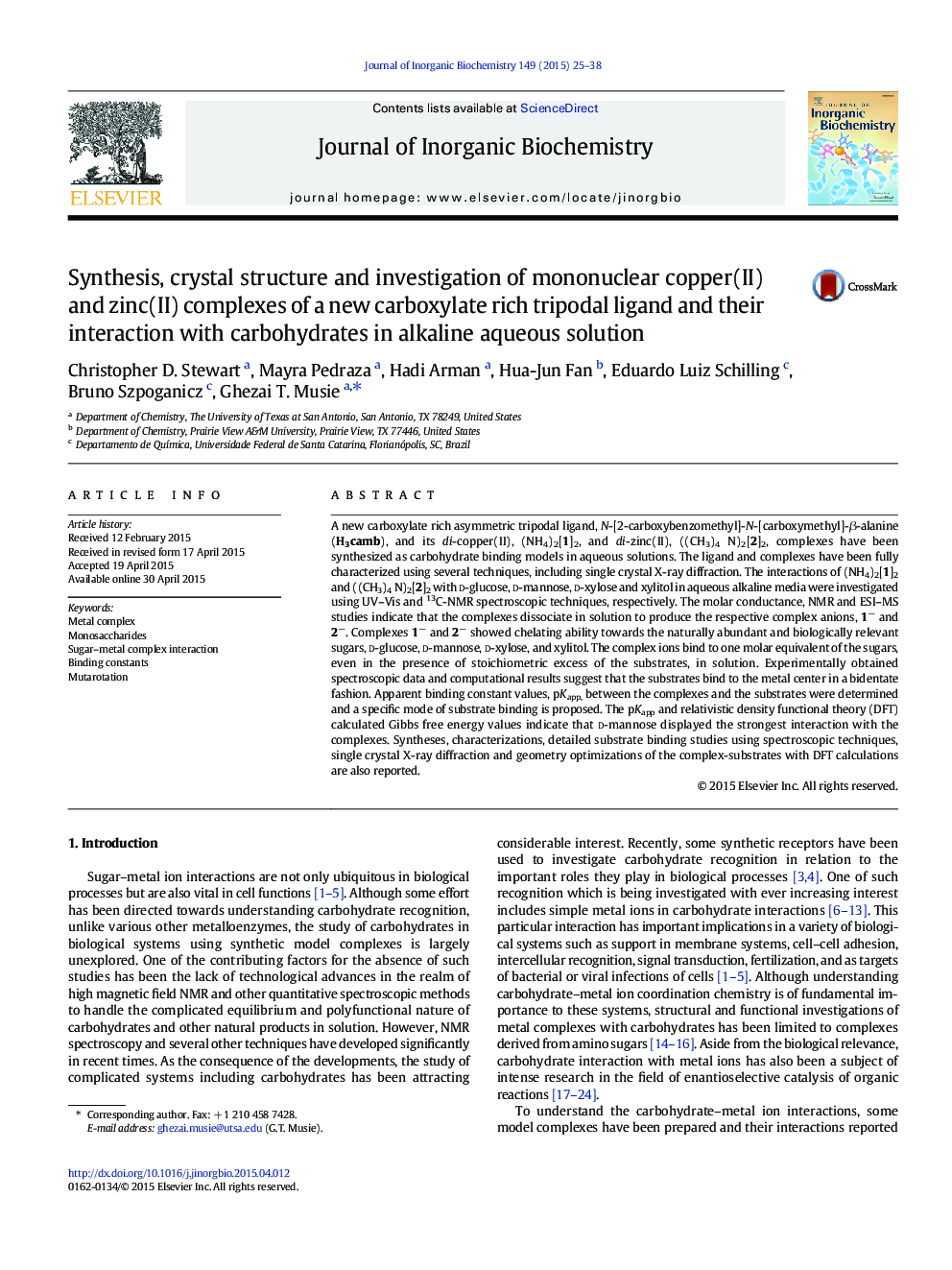| کد مقاله | کد نشریه | سال انتشار | مقاله انگلیسی | نسخه تمام متن |
|---|---|---|---|---|
| 1317111 | 1499438 | 2015 | 14 صفحه PDF | دانلود رایگان |

• Water soluble copper(II) and zinc(II) complexes of carboxylate rich ligand
• Synthesis, X-ray structures and aqueous solution studies
• Ability of the complexes to interact with monosaccharides
• Binding constant determinations
A new carboxylate rich asymmetric tripodal ligand, N-[2-carboxybenzomethyl]-N-[carboxymethyl]-β-alanine (H3camb), and its di-copper(II), (NH4)2[1]2, and di-zinc(II), ((CH3)4 N)2[2]2, complexes have been synthesized as carbohydrate binding models in aqueous solutions. The ligand and complexes have been fully characterized using several techniques, including single crystal X-ray diffraction. The interactions of (NH4)2[1]2 and ((CH3)4 N)2[2]2 with d-glucose, d-mannose, d-xylose and xylitol in aqueous alkaline media were investigated using UV–Vis and 13C-NMR spectroscopic techniques, respectively. The molar conductance, NMR and ESI–MS studies indicate that the complexes dissociate in solution to produce the respective complex anions, 1− and 2−. Complexes 1− and 2− showed chelating ability towards the naturally abundant and biologically relevant sugars, d-glucose, d-mannose, d-xylose, and xylitol. The complex ions bind to one molar equivalent of the sugars, even in the presence of stoichiometric excess of the substrates, in solution. Experimentally obtained spectroscopic data and computational results suggest that the substrates bind to the metal center in a bidentate fashion. Apparent binding constant values, pKapp, between the complexes and the substrates were determined and a specific mode of substrate binding is proposed. The pKapp and relativistic density functional theory (DFT) calculated Gibbs free energy values indicate that d-mannose displayed the strongest interaction with the complexes. Syntheses, characterizations, detailed substrate binding studies using spectroscopic techniques, single crystal X-ray diffraction and geometry optimizations of the complex-substrates with DFT calculations are also reported.
Water soluble copper(II) and zinc(II) complexes of a new carboxylate rich ligand, H3camb, were synthesized and characterized. The interaction of the complexes towards biologically relevant sugars (d-glucose, d-mannose, d-xylose and xylitol) in alkaline aqueous solutions was investigated. Apparent binding constant values and results of relativistic DFT studies are also reported.Figure optionsDownload as PowerPoint slide
Journal: Journal of Inorganic Biochemistry - Volume 149, August 2015, Pages 25–38